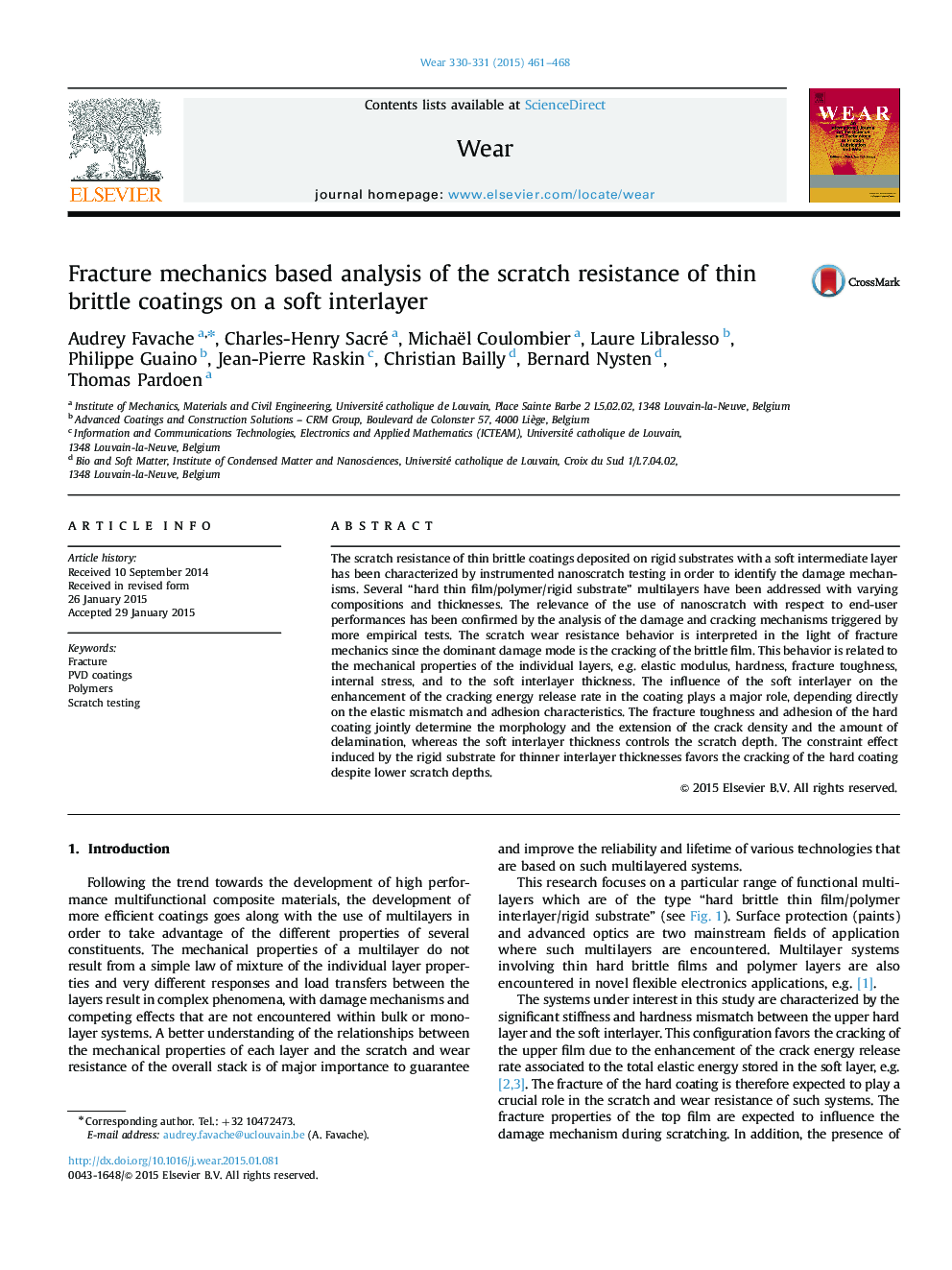| Article ID | Journal | Published Year | Pages | File Type |
|---|---|---|---|---|
| 7004336 | Wear | 2015 | 8 Pages |
Abstract
The scratch resistance of thin brittle coatings deposited on rigid substrates with a soft intermediate layer has been characterized by instrumented nanoscratch testing in order to identify the damage mechanisms. Several “hard thin film/polymer/rigid substrate” multilayers have been addressed with varying compositions and thicknesses. The relevance of the use of nanoscratch with respect to end-user performances has been confirmed by the analysis of the damage and cracking mechanisms triggered by more empirical tests. The scratch wear resistance behavior is interpreted in the light of fracture mechanics since the dominant damage mode is the cracking of the brittle film. This behavior is related to the mechanical properties of the individual layers, e.g. elastic modulus, hardness, fracture toughness, internal stress, and to the soft interlayer thickness. The influence of the soft interlayer on the enhancement of the cracking energy release rate in the coating plays a major role, depending directly on the elastic mismatch and adhesion characteristics. The fracture toughness and adhesion of the hard coating jointly determine the morphology and the extension of the crack density and the amount of delamination, whereas the soft interlayer thickness controls the scratch depth. The constraint effect induced by the rigid substrate for thinner interlayer thicknesses favors the cracking of the hard coating despite lower scratch depths.
Related Topics
Physical Sciences and Engineering
Chemical Engineering
Colloid and Surface Chemistry
Authors
Audrey Favache, Charles-Henry Sacré, Michaël Coulombier, Laure Libralesso, Philippe Guaino, Jean-Pierre Raskin, Christian Bailly, Bernard Nysten, Thomas Pardoen,
